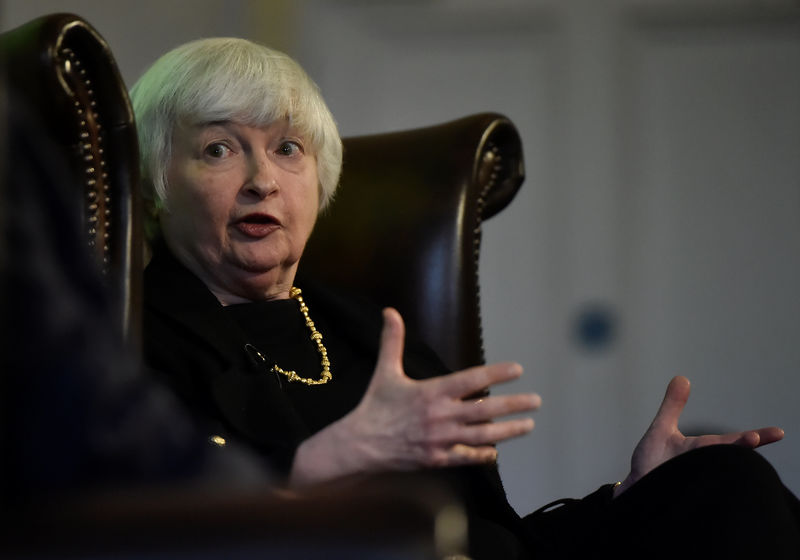By Lindsay Dunsmuir and Jason Lange
WASHINGTON (Reuters) - Federal Reserve policymakers were increasingly split on the outlook for inflation and how it might affect the future pace of interest rate rises, according to the minutes of the Fed's last policy meeting on June 13-14 released on Wednesday.
The details of the meeting, at which the U.S. central bank voted to raise interest rates, also showed that several officials wanted to announce a start to the process of reducing the Fed's large portfolio of Treasury bonds and mortgage-backed securities by the end of August but others wanted to wait until later in the year.
"Most participants viewed the recent softness in these price data as largely reflecting idiosyncratic factors...however, several participants expressed concern that progress...might have slowed and that the recent softness in inflation might persist," the Fed said in the minutes.
The committee questioned why financial conditions had not tightened despite recent rate rises and a few said equity prices were elevated.
U.S. stock prices were up slightly at the close of trade while yields on U.S. government debt dipped. The dollar was little changed against a basket of currencies.
Last month's 8-1 vote to lift the benchmark interest rate another quarter percentage point, its second this year, signaled the Fed's confidence in a growing U.S. economy and the eventual inflationary effects of low unemployment.
In a press conference at the time, Fed Chair Janet Yellen described a recent decline in inflation as temporary and the central bank kept its forecast of one more rate rise this year and three the next.
Some policymakers since then, however, have shown increasing worry about the Fed's struggle to get inflation back to its 2 percent objective.
The Fed's preferred measure of underlying inflation slipped again in May to 1.4 percent, the Commerce Department reported on Friday, and has run below target for more than five years.
In the minutes, a few policymakers also said the inflation weakness made them less comfortable with the current implied path of rate hikes.
"These participants expressed concern that such a path of increases...might prove inconsistent with a sustained return of inflation," according to the minutes.
"These views suggest that a third rate hike this year remains a solid base case, but also that such a hike is unlikely to come before the December meeting," said Roberto Perli, an economist at Cornerstone Macro.
BALANCE SHEET CUTS EDGES CLOSER
The issue of when to begin reducing the Fed's $4.2 trillion portfolio of Treasury bonds and mortgage-backed securities and how it might affect deciding future rate rises also sparked debate.
At the June meeting, the Fed gave a clear outline of its plan this year to reduce its portfolio but gave no precise timing. The shedding of the bonds and other securities, most of which were purchased in the wake of the 2007-2009 financial crisis, marks the final chapter in the central bank's normalization of monetary policy.
Several Fed officials felt the reduction in the balance sheet and associated policy tightening "was one basis for believing that...the target range for the federal funds rate would follow a less steep path than it otherwise would." Some others, however, said the shedding of bonds should not figure heavily in deciding monetary policy.
Economists largely expect the Fed to begin shrinking its balance sheet at its September meeting before raising rates again at its final meeting of the year in December.

Investors also see the next rate increase occurring in December, according to Fed funds futures data compiled by the CME Group (NASDAQ:CME). The rate-setting committee is next scheduled to meet to decide interest rate policy on July 25-26.